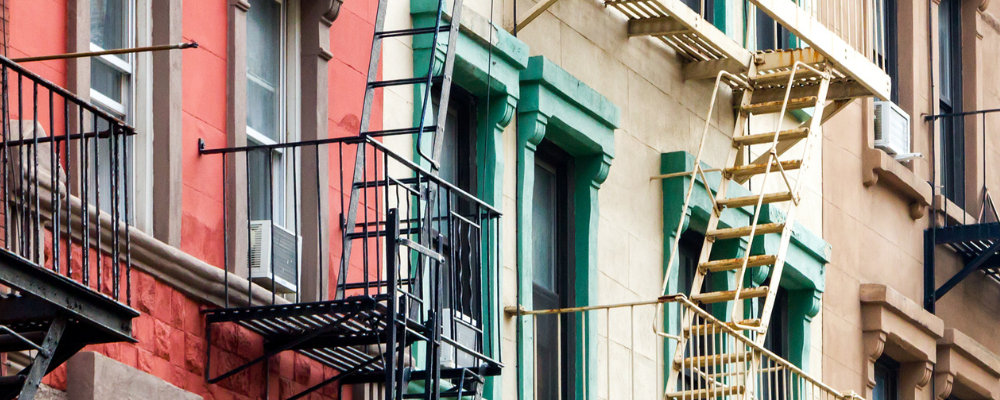
Ten things to know about homelessness in New York City
17 Aug 2023
Guest Author
By Nick Falvo, PhD
I recently helped organize a homelessness study tour of New York City in partnership with the Chartered Institute of Housing Canada. Our group consisted of 30 Canadians from the non-profit sector, government, law enforcement and academia. We toured six sites over a three-day period.
Here are 10 things to know:
- New York City has a massive homeless population. More than 75,000 people sleep in New York city’s main municipal shelter system each night, including more than 20,000 children. While problematic, the sheer size of the city’s homeless population does make New York an important place to learn about policy and programmatic responses.
- Legal rights don’t always generate their intended outcomes. Persons in New York City have a “right to shelter,” which was granted in 1981 by a consent decree—essentially an out of court settlement—from the New York State Supreme Court. Under the decree, the City has a legal requirement to place unhoused persons into shelter within 24 hours; otherwise, the City can be fined. One criticism of this right is that it incentivizes the creation of shelter beds, possibly at the expense of permanent housing.
- Some people experiencing homelessness benefit from low-barrier shelters. One such model in New York City consists of Safe Havens, designed for people who have experienced long-term homelessness and may be resistant to traditional shelters. Safe Havens typically have no sobriety requirements or curfews. Barrings are rare, and a person can be absent for several nights and not lose their bed.
- Others may be ready for more programmatic approaches. The Bergen County Housing Center seeks to house people within 90 days of entry into their facility. Any person wanting to stay there must be willing to work relentlessly on a housing search. In the words of the housing center’s director: “When a person is given a housing offer, we put quite a bit of pressure on them to take it.”
- Even in emergency facilities, it’s possible to create some privacy for residents. At the Westchester Avenue Safe Haven, operated by BronxWorks, nobody has to share a room, and every resident has their own bathroom and television. Having said that, residents do not have their own key to their rooms, and the walls surrounding their rooms do not always reach the ceiling (making them a bit like office cubicles).
- Tenant mix matters. Community Access is a non-profit organization that owns and operates a 215-unit supportive housing building whose tenants include families with children, as well as single adults with serious mental health challenges. Most of their tenants can stay in their units indefinitely (they don’t have to move on to other forms of housing). All housing that is operated by Community Access is “integrated,” meaning some tenants have serious mental health challenges and others do not. This approach is largely imposed by municipal and state regulations.
- Public libraries can play important roles in the homeless-serving sector. The Brooklyn Public Library partners with 13 family shelters. They take books to shelters, give children their first library cards and encourage kids to visit their local library. This encourages parents to take their kids to the library and can boost literacy among both parents and children.
- Engagement with police matters. The Center for Urban Community Services (CUCS) does four-day trainings with all NYPD officers through a national initiative called Crisis Intervention Training. This involves professional actors at a training facility that features mock subway cars. During the training, persons with lived experience with mental health challenges, as well as law enforcement officials, share their stories. CUCS and NYPD co-developed the curriculum.
- Engagement with the corrections sector is important. Officials at the Bergen County Housing Center prioritize the jail population. Their staff go into the Bergen County Jail—a 1,000-inmate facility located directly across the street—and bring people directly into the shelter on release from jail. This approach requires working with jail staff early on to identify inmates who lack permanent housing.
- Programming is important, but so too is income assistance. We learned about a pilot program for youth experiencing homelessness called the Trust Youth Initiative, a three-city randomized controlled study where US$1,200/month is provided to members of a treatment group for 2.5 years (members of a control group receive services as usual, but not the US$1,200/month cash). Project partners include Point Source Youth and the Ali Forney Center. The research is being led by Chapin Hall at the University of Chicago.
In sum. This blog post provides an overview of a three-day homelessness study tour which was a partnership between the Chartered Institute of Housing Canada and Nick Falvo Consulting. A more detailed summary of the study tour can be found here. We hope to make this an annual event, with our next study tour set to take place in London (England) in May 2024.
I wish to thank Sylvia Regnier and Alex Tétreault for assistance with this blog post, which originally appeared at the home page of Nick Falvo Consulting: https://nickfalvo.ca/
